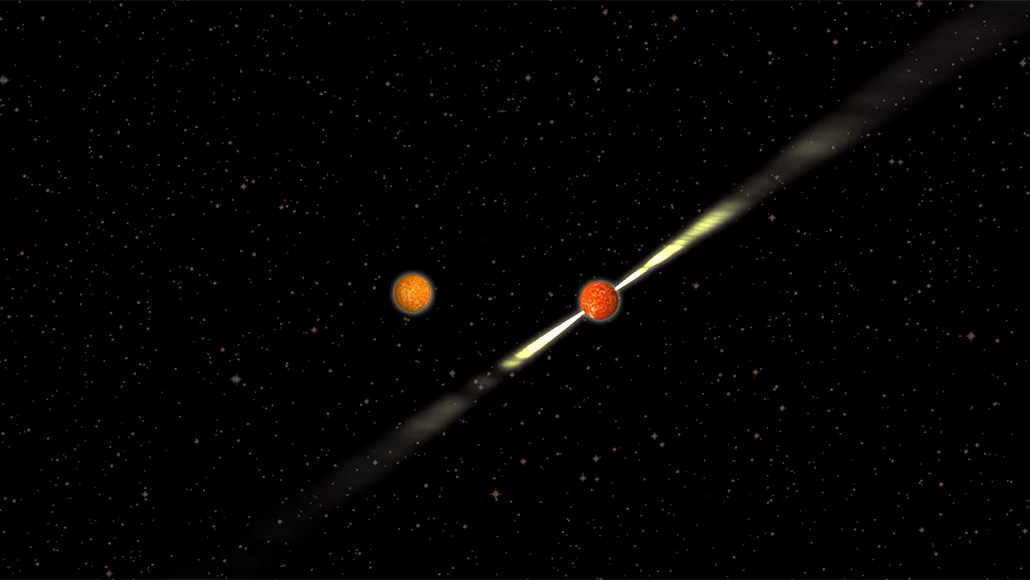
A quirk of Einstein’s general theory of relativity let astronomers map the beams of radio waves emitted by a type of neutron star called a pulsar. The pulsar orbits with another neutron star (illustrated).
Joeri van Leeuwen/ASTRON, CC BY-SA

A quirk of Einstein’s general theory of relativity let astronomers map the beams of radio waves emitted by a type of neutron star called a pulsar. The pulsar orbits with another neutron star (illustrated).
Joeri van Leeuwen/ASTRON, CC BY-SA